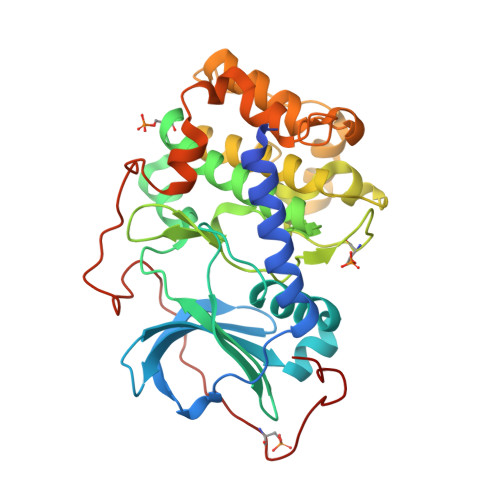Fragment Binding to Kinase Hinge: If Charge Distribution and Local pK a Shifts Mislead Popular Bioisosterism Concepts.
Oebbeke, M., Siefker, C., Wagner, B., Heine, A., Klebe, G.(2020) Angew Chem Int Ed Engl
- PubMed: 33021032
- DOI: https://doi.org/10.1002/anie.202011295
- Primary Citation of Related Structures:
5N33, 5N3C, 5N3D, 5N3E, 5N3H, 5N3J, 5N3Q, 5N3S, 6SNN, 6SNX, 6SOX, 6SPM, 6SPS, 6SPU, 6SPY, 6YPS, 6Z08, 6Z44, 6ZN0 - PubMed Abstract:
Medicinal-chemistry optimization follows strategies replacing functional groups and attaching larger substituents at a promising lead scaffold. Well-established bioisosterism rules are considered, however, it is difficult to estimate whether the introduced modifications really match the required properties at a binding site. The electron density distribution and pK a values are modulated influencing protonation states and bioavailability. Considering the adjacent H-bond donor/acceptor pattern of the hinge binding motif in a kinase, we studied by crystallography a set of fragments to map the required interaction pattern. Unexpectedly, benzoic acid and benzamidine, decorated with the correct substituents, are totally bioisosteric just as carboxamide and phenolic OH. A mono-dentate pyridine nitrogen out-performs bi-dentate functionalities. The importance of correctly designing pK a values of attached functional groups by additional substituents at the parent scaffold is rendered prominent.
Organizational Affiliation:
Philipps Universität Marburg, Institut für Pharmazeutische Chemie, Marbacher Weg 6, 35032, Marburg, Germany.



















